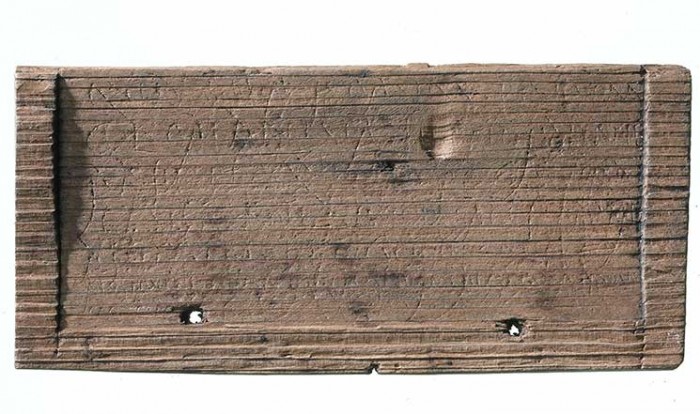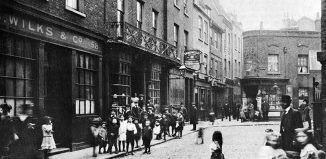Britain’s oldest writing discovered in London

The first handwritten documents known in Britain, dating as far back as 8 January AD 57, have been discover by archaeologists from the Museum of London Archeology (MOLA) during a dig at a London building site.
The writing tablets include the first mention of the city by name from AD 65/70-80, bills and accounts, some dated within the first decade of Roman rule, along with evidence of someone practising writing the alphabet and numerals – perhaps the first evidence for a school in Britain.
The tablets form a fascinating insight into the life in the new Roman city of London and drawing an intimate portrait of much, and how little, commercial life in London has changed. One tablet, dated AD 43-53, contains a disagreement about a debt, which could have been written at any point in history. It reads: “…because they are boasting through the whole market that you have lent them money. Therefore I ask you in your own interest not to appear shabby… you will not thus favour your own affairs….”

The Roman used waxed writing tablets as we would paper – for note-taking and accounts, correspondence and for legal documents – all over the Empire but, in Britain, only 19 legible tablets were known from London until now. This dig has revealed 87 more, which have now been deciphered. Made of wood, recesses in the rectangular tablets were filled with blackened beeswax, with text inscribed into the wax with styluses. Although the wax hasn’t survived, the writing occasionally went through the wax to mark the wood.
The tablet were found during a dig at the site of the new Bloomberg headquarters in heart of London’s financial district, which sits on what was Roman London.
Sophie Jackson, archaeologist and director at MOLA, said: “We always had high hopes for the Bloomberg dig, situated in the heart of the Roman and modern city and with perfect wet conditions for the survival of archaeology, but the findings far exceeded all expectations. The writing tablets are truly a gift for archaeologists trying to get closer to the first Roman Britons.”
More than 700 artefacts from the excavation will be displayed in a public exhibition, London Mithraeum, in the new Bloomberg building, which is due to open in autumn 2017.







